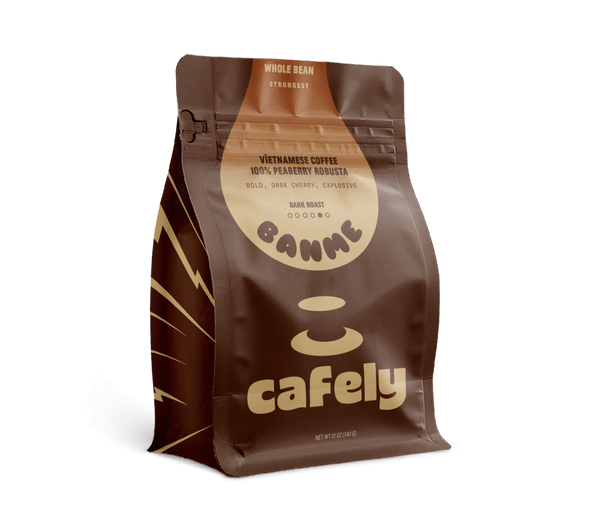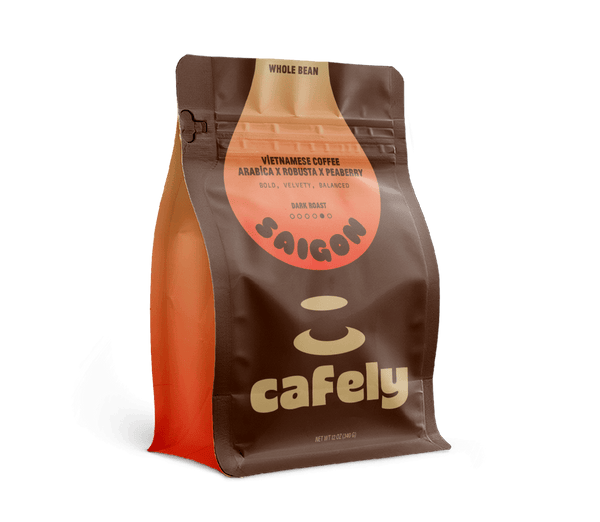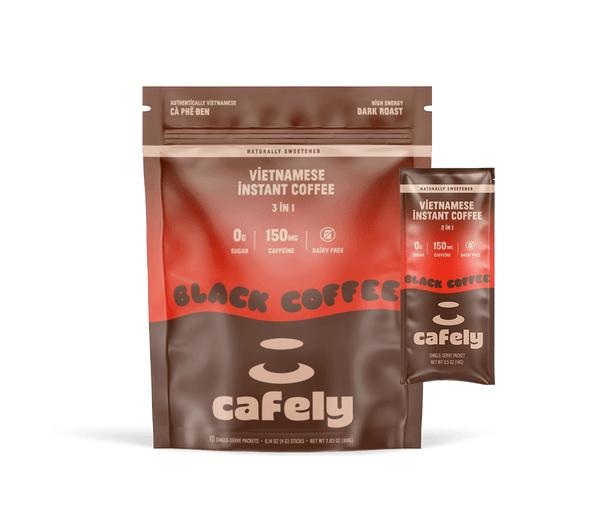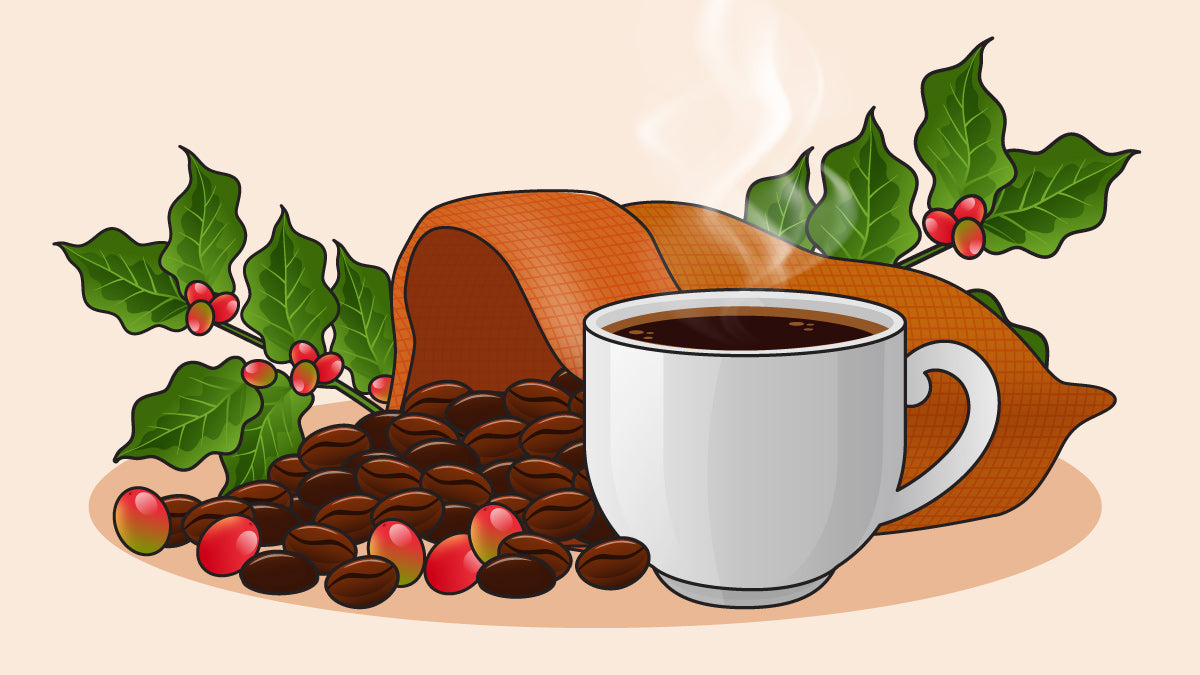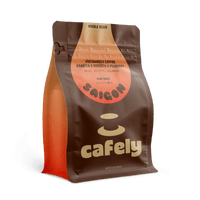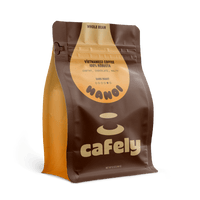Coffee is the third most popular beverage in the world, followed by water and tea. An estimated 2.2 billion cups of coffee are prepared every day.
Despite how common it is, a lot goes into your cup of coffee you probably aren't aware of.
Here are 105 facts about coffee to broaden your knowledge and appreciation of this incredible drink:
Fun Coffee Facts
1. Coffee is thought to have originated in the Kaffa region of Ethiopia or Yemen.
2. A coffee origin story of a 9th-century Ethiopian goat herder named Kaldi, seeing his goats becoming especially energetic after eating coffee fruits in Ethiopia.
3. Yemen's origin story involves a Sheikh named Omar, who was exiled from Mokha and forced to survive by eating coffee beans. After roasting and chewing the beans, Omar boiled them and made the first cup of coffee.
4. Yemen is also responsible for the first officially documented use of coffee. In a 15th-century monastery of Sufis, a group of Muslim mystics documented roasting and brewing coffee to stay alert during rituals.
5. Other arguments for Ethipoia, being the origin, point out that while there are an estimated 6000 varieties of coffee, the original genetics can be found in Ethipoia [1].
6. While the goat herder, who apparently discovered coffee, prepared it as a tea, coffee was initially chewed. Even today, whole coffee beans are soaked in water infused with spices and chewed in Africa.
7. Bees are attracted to coffee plants; they enjoy the effects of caffeine, and researchers have discovered it may help their long-term memory [43].

8. The world's oldest cat drank coffee every day [44].
9. Some companies are trying to make synthetic coffee, no plant required.
10. The International Space Station (ISS) is stocked with instant coffee for its astronauts. This is the only form of coffee that can survive the challenging conditions of space travel.
11. In Indonesia, the Kopi Luwak (a small jungle cat) is fed green coffee beans. The beans are then collected from their excrement. Digestive enzymes in the Kopi Luwak's digestive system are said to give the coffee a unique flavor.
12. In Thailand, elephants are fed coffee beans to create Black Ivory Coffee, which can cost up to $1100 per kilo, making it the most expensive coffee in the world.
13. The practice of Tasseography uses coffee grounds in finished cups of coffee to read the future.
14. The caffeine extracted from decaffeinated coffee is sold to pharmaceutical companies and soda manufacturers.
15. Coffee grounds can be used to fertilize plants and grow mushrooms.
16. Coffee enemas are a wellness trend used to promote digestive system health. However, it’s a controversial practice with limited scientific evidence to support its suggested health benefits. They can even be harmful if not done properly.
17. Some companies put coffee grounds in hair and skin products. Caffeine is believed to stimulate blood flow to the skin and hair follicles, and the abrasive texture of ground coffee helps exfoliate the skin.
18. National Coffee Day is September 29th.
19. The first webcam was invented at Cambridge University to allow faculty to see whether the coffee pot was empty before heading to the cafeteria.

Coffee History Facts
20. Coffee first arrived in the Middle East from Africa in the 15th century. It quickly became one of the most popular beverages in city centers like Cairo.
21. Coffee spread to South India, Persia, Turkey, and North Africa after seeds were smuggled to Mysore, India, by a Sufi. Prior to this event, all coffee seeds traded on the open market were sterilized and would not grow.
22. Coffee's popularity in the United States boomed after a revolt against the British on December 16, 1773. The event, called the Boston Tea Party, took place at Griffin's Wharf in Boston, Massachusetts. American colonists, frustrated and angry at Britain for imposing "taxation without representation," dumped 342 chests of British tea into the Boston Harbor.
Botanical Facts About the Coffee Plant
23. There are two main species of coffee consumed today — Arabica (Coffea arabica) and Robusta (Coffea canephora). Arabica is the most popular, followed by robusta. Liberica is rarely used.
24. Robusta has roughly two times more caffeine than Arabica but is less popular, in part due to a more bitter flavor profile.
25. There are 129 different species of coffee in total, including Coffea liberica, Coffea stenophylla, Coffea mauritiana, and Coffea racemosa, some of which are becoming specialty varieties around the world.

26. Coffee isn't a bean but a seed from inside a fruit or 'cherry.' The outer covering is called 'cascara' and usually turns from yellow to orange to red, but different varieties ripen to orange or yellow.
27. The cascara of coffee fruits is removed and typically contains two seeds, but a minority of berries produce a single seed, called peaberries.
28. The cascara (outer seed covering) of coffee can be made into a tea rich in antioxidants.
29. Before fruiting, coffee plants produce many sweet-smelling flowers.
30. A coffee tree will begin to flower and produce fruit after three or four years but will reach peak production in five.
31. Coffee trees are productive for about twenty years, but some have lived to be one hundred. Most plantations replace their plants after 10 or 20 years.
32. Coffee fruits can be harvested by machine or by hand. The coffee fruits aren’t all ripe at the same time, so selective hand-picking is considered to produce higher quality coffee than machine-harvesting.
33. Coffee grows best in a region called the coffee belt or the bean belt, which are warm parts of the world between the tropics of Cancer and Capricorn.
34. Production of coffee has resulted in the destruction of rainforests around the world — leading to loss of biodiversity in sensitive regions and causing issues with pesticide runoff ending up in streams and rivers.
35. Environmental concerns have led to 'shade-grown coffee' being a selling point, which uses other food-producing plants like banana, avocado, or plantain to provide habitats for animals.
Coffee Consumption Facts

36. Every day, 2.25 billion cups of coffee will be consumed. About 60% of the global population drinks coffee [8].
37. In 2023, the world consumed 173.1 million bags of coffee [7].
38. North and South America and Europe drink far more coffee than the rest of the world, who prefer to start their day with tea [9].
39. Measured by total consumption, the United States drinks the most coffee, with 63% reporting drinking a cup every day. In 2023, the US consumed a whopping 26.3 million bags of coffee [10].
40. Brazil is the second largest consumer of coffee — drinking 22.7 million bags in 2023 [11].
41. Per capita, Finland dominates with 6.9 kg of coffee per person, followed closely by the Netherlands with 6.87kg per person [12].
Coffee Health Facts
42. Attitudes towards coffee have flip-flopped over the years. Today, science supports the opinion that coffee is a health beverage — when used in moderation.
43. A study conducted in Spain showed that when folks stopped drinking coffee after being regular consumers, their health declined [13].
Coffee and the substances within it can positively affect many different conditions:
- 44. Overall mortality — Frequent coffee consumption is associated with longer life [14].
- 45. Blood pressure — Coffee spikes blood pressure in the short term, but with consistent consumption, this spike becomes less significant [15].
- 46. Alertness — Coffee enhances mental performance but can also cause insomnia [16].
- 47. Pain — Caffeine enhances the effect of some painkillers [17].
- 48. Depression — Coffee may reduce depression risk and improve mood [18].
- 49. Type 2 diabetes — Researchers note a 'substantially lower risk' of type two diabetes with a daily coffee habit [19].
- 50. Liver — Coffee consumption may reduce the risk of liver disease and cancer [20].
- 51. Kidneys — Coffee is a diuretic (makes you pee), but moderate use isn't a dehydration risk [21].
- 52. Reduced cancer risk — Studies show a reduced risk of colon [22] and liver cancer [23] in people who drink a lot of coffee.
- 53. Microbiome — Coffee is associated with the growth of beneficial gut microbes [24].
- 54. Inflammation — Rats given coffee showed marked reductions in inflammatory markers (not found with decaf).
- 55. Degenerative Neurological Conditions — Coffee consumption is correlated with a reduced risk of developing Parkinson's [25] and Alzheimer's disease [26].
- 56. Weight Loss — Coffee has been shown to support weight loss through thermogenesis [27].
- 57. Heart Disease — Some studies show a lower risk of hypertension and heart disease in people who drink coffee every day [28].
- 58. Stroke — Some studies suggest drinking coffee could prevent strokes [29].

All that is pretty impressive, but Christina Wee, an Associate Professor at Harvard Medical School, does caution, "If you're not a coffee drinker and you don't particularly like drinking coffee, I wouldn't start drinking coffee because of the potential health benefits. That's a leap."
59. Coffee is a major source of dietary antioxidants. Green coffee, in particular, contains over 1000 antioxidants.
Research has shown coffee contains many bioactive and beneficial compounds:
- Polyphenols — Implicated in preventing heart disease, diabetes, and cancer while showing potential neuroprotective properties, treatment of COVID-19, and improved fertility [37].
- Chlorogenic Acids — Also a huge factor in flavor, chlorogenic acids act also could have antiviral, antibacterial, anticancer, and anti-inflammatory effects while reducing the risk of cardiovascular diseases, type 2 diabetes, and Alzheimer’s [38].
- Cafestol — May help prevent cancer, inflammation, and diabetes [39].
- Trigonelline — 1-3% of dry weight of coffee; these compounds have neuroprotective and antidiabetic effects [40].
- Melanoidins — Studied for antimicrobial and anticancer properties alongside effects on inflammation and hypertension [41].
- Hydrocinnamic acids — Extracts used to treat Parkinson's disease [42].

Coffee Nutrition Facts
60. While it depends on many factors like the type of bean, where it was grown, and how it was roasted and prepared, the nutrients one cup of coffee contains are roughly [30]:
- Magnesium: 7 mg (2% of the DV)
- Potassium: 115 mg (3% of the DV)
- Niacin (B3): 0.5 mg (3% of the DV)
- Riboflavin (B2): 0.2 mg (11% of the DV)
- Total calories: 2–5
Coffee Economics Facts
Today, coffee dominates global sales of hot drinks, capturing 47% of the total market share [2].
61. Coffee is an extremely important crop in developing countries. It’s the second most popular export behind petrol. Developing countries produce 90% of the world's coffee [3].
62. Currently, over 125 million people depend on coffee to make a living [4]. At least 12.5 million producers are small farms growing coffee [5].
63. Coffee pickers are often paid by production and can struggle to make a living wage. For example, in Uganda, a worker makes $88 USD per year. Initiatives like Fair Trade seek to improve these situations with variable success [6].
Coffee Production Facts
64. In 2023, the world produced over 10 billion tons of coffee (168.2 million 60kg bags), with the breakdown of 60kg bags being roughly [7]:
- South America produced around 48% (81.3 million bags)
- Asia/Oceania produced 29% (49.8 million bags)
- Central America and the Caribbean produced 11% (19.2 million bags)
- Africa produced around 10% (17.9 million bags)
65. Brazil is by far the world's largest grower and brings South America to the top of the production list, producing 65.49 million bags, or 38.9% of global production in 2023.

66. Outside of South America, the top producers of coffee include Vietnam (29.2 million bags), Ethiopia (7.73 million bags), and Honduras (5.7 million bags).
67. The world slightly favors Arabica coffee, encompassing 55.9% of total production and 60% of total Arabica coming from South America. 57.8% of robusta was produced in Asia and Oceania. (We'll see if we can change that 😉).
Caffeine Facts
68. Growing practices, plant species, genetics, storage conditions, roasting degree, and brewing method all influence how much caffeine the coffee tree produces.
69. Depending on how it's made, a cup of coffee can have 65 mg to 120 mg of caffeine. The global average is about 95 mg caffeine per standard 12 oz cup of arabica coffee.
70. Caffeine increases with light and medium roasts, but levels drop with dark roasts [31].
71. About 85% of people in the US consume 165 mg of caffeine daily. Folks over 50 consume more, with an average of 226 mg [32].
72. Caffeine tolerance can build up rapidly, taking effect within a single week, so take these with a grain of salt.
73. Genetic factors also appear to influence caffeine's effects and may be inherited from one generation to the next [33].
74. Smoking makes the body process caffeine up to 50% faster [34].
75. Some drugs change how long caffeine's effects last, extending effects by using liver enzymes [35].
76. All caffeine will be absorbed by the digestive system after oral consumption within 45 minutes, with effects peaking 15 to 20 minutes after consumption.
77. For some people, more than 400 mg of caffeine per day can cause anxiety. Taking more than 200 mg of caffeine in one sitting can also trigger side effects [36].
78. Caffeine becomes toxic at a dose of 1.2 grams, and over 10 to 14 grams could be fatal. This usually occurs from taking caffeine pills, not chugging espresso.
79. The stimulating component of chocolate (Theobroma cacao), called theobromine, is the molecular mirror image of caffeine. It's stimulating like caffeine but less potent overall.

Coffee Brewing Methods
80. In the 1930s, coffee grounds were put in a cap with boiling water poured overtop. This is still done in some parts of the world, like the Middle East, where it is called 'Mud coffee.' In the United States, this is called 'cowboy coffee.'
81. Starting in the 16th century in the Ottoman Empire, very fine ground coffee was placed in a special pot ('cezve’ in Turkish) and boiled and removed from heat several times. The potent brew — called Turkish Coffee — is served in small cups, often with cardamom.
82. The French Press was first patented in 1852 (then called the 'cafetière' in French). This classic method of brewing can take some practice to get grinding (a coarse grind) and timing right (4-7 minutes). A tall container with a plunger separates the ground from the water when the brew is finished.
83. Drip Coffee, Sometimes called filtered coffee, uses hot water that drips slowly over coffee grounds contained by a special filter. It was the most common method for brewing coffee in North America but has gradually fallen out of favor towards more specialty brewing methods like pour-over and espresso.
84. The first paper coffee filters were invented in 1908.
85. The Japanese have been making cold brew coffee for centuries. Cold water is poured over the grounds and allowed to steep for 8 to 24 hours.
86. The Moka Pot was patented in 1933 in Italy. It uses a specially designed stovetop pot that forces hot water up through a puck of coffee to create a brew resembling espresso.
87. The AeroPress is a recent innovation in coffee brewing that was invented in 2004. It combines immersion and pressure brewing philosophies to create an espresso-like coffee.
88. Instant Coffee was invented in the 50s. It's made by brewing a large vat of coffee, which is then spray-dried or freeze-dried to preserve its flavor.
89. Pour Over coffee is brewed by manually pouring water over fresh-ground coffee. The extraction is then filtered through paper or metal screens using devices like the Chemex or Hario V60.
90. The Hario V60 gets its name from the ideal 60-degree angle of the cone. It's believed to offer the ideal extraction rate as water flows through the grounds and into your cup.

Espresso Coffee Facts
91. Espresso is the most common method for professional coffee brewing. It requires a specialized machine that forces pressurized hot water through a puck of finely ground coffee.
92. The word espresso has several meanings, such as 'expressing' a flavor or being fast like an 'express' train. The foam on top of an espresso is called ‘crema’ and adds unique flavors. (See for yourself by removing the crema from your espresso and taste testing.)
93. The first espresso machine was patented by Angelo Moriondo in Italy.
94. Espresso is made using a 1:1 ratio of coffee and water (traditionally about 30 mL).
95. Cappuccinos are made using single or double shots of espresso (30-60 mL) with frothed milk. The ratio of milk foam, liquid milk, and coffee is 1:1:1.
96. Lattes are made using two shots of espresso mixed with milk at a 1:3 ratio (120 mL).
97. Macchiatos traditionally use just one shot of espresso — about 30 mL with a small amount of foam on top. Macchiato means 'mark' in Italian, from when baristas used to mark different shots.
98. Cortados contain a single shot of espresso with an equal amount of milk and some foam (60 mL).
99. Flat Whites are made using one or two shots of espresso (30-60 mL) mixed with microfoam.
Expert Coffee Brewing Facts
100. A professional coffee taster is called a 'cupper.'
101. Cuppers are trained to examine five key characteristics when tasting coffee:
- Acidity — A snappy, sharp taste that can be desirable or overwhelming. (Not the Ph of a coffee)
- Aroma — Smell can bring out flavors the tongue cannot taste. There are hundreds of coffee aromatics, some examples being floral, citrus, chocolate, and caramel.
- Body — Can be described as ‘mouth feel’ or ‘weight.’ It’s how the coffee feels inside the mouth.
- Bitterness — In moderation, bitterness isn’t negative because it contributes to a balanced flavor profile. However, when it overpowers other notes, it becomes undesirable.
- Aftertaste — After the coffee has left the mouth, flavors and aromas linger. This is also called 'finish.'
102. Expert baristas emphasize the use of uniform ground in all forms of preparation, regardless of brewing method.
103. Coffee brewing times that are too long extract heavier, more bitter compounds. Long brew times produce an overpowering bitterness. Brew times that are too short create a watery brew.

104. Adding dairy (or non-dairy alternatives) changes the mouth feel of coffee. It’s used to suppress bitter or acrid flavors and aromas.
105. The most prestigious barista school in the world is the Universita del Caffe, founded in Trieste, Italy, in 1999.
References
- Megersa, H., & Jimma, E. (n.d.). History of Coffee. https://routledgeopenresearch.s3.eu-west-1.amazonaws.com/posters/docs/routledgeopenres-197710.pdf
- Global Hot Drinks Market Size, Share | Industry Trends Report, 2025. (2019). Grandviewresearch.com. https://www.grandviewresearch.com/industry-analysis/hot-drinks-market
- Garcia-Freites, S., Welfle, A., Lea-Langton, A., Gilbert, P., & Thornley, P. (2019). The potential of coffee stems gasification to provide bioenergy for coffee farms: a case study in the Colombian coffee sector. Biomass Conversion and Biorefinery. https://doi.org/10.1007/s13399-019-00480-8
- Fairtrade Foundation. (2022). Coffee farmers. Fairtrade Foundation. https://www.fairtrade.org.uk/farmers-and-workers/coffee/
- Siles, P., Cerdán, C., & Staver, C. (2022c). Smallholder Coffee in the Global Economy—A framework to explore transformation alternatives of traditional agroforestry for greater economic, ecological, and livelihood viability. Frontiers in Sustainable Food Systems, 6. https://doi.org/10.3389/fsufs.2022.808207
- Coffee Barometer 2023 Content. (n.d.). https://www.solidaridadnetwork.org/wp-content/uploads/2023/09/Coffee-Barometer-2023.pdf
- International Coffee Organization. (2023). Coffee report and outlook. https://icocoffee.org/documents/cy2023-24/Coffee_Report_and_Outlook_December_2023_ICO.pdf
- Conway, J. (2021, February 4). Global coffee consumption, 2018/19. Statista. https://www.statista.com/statistics/292595/global-coffee-consumption/
- DeSilver, D. (2013, December 20). Chart of the Week: Coffee and tea around the world. Pew Research Center. https://www.pewresearch.org/short-reads/2013/12/20/chart-of-the-week-coffee-and-tea-around-the-world/
- Coffee consumption U.S. 2023/2024 | Statista. (2023c, November 23). Statista. https://www.statista.com/statistics/804271/domestic-coffee-consumption-in-the-us/
- Coffee consumption in Brazil 2020, by type. (n.d.). Statista. https://www.statista.com/statistics/1182791/coffee-consumption-brazil-type/
- Per-capita volume sales in the coffee market worldwide by country 2017. (n.d.). Statista. https://www.statista.com/forecasts/758734/per-capita-volume-sales-in-the-coffee-market-worldwide-by-country
- Ortolá, R., Carballo-Casla, A., García-Esquinas, E., Lopez-Garcia, E., Banegas, J. R., & Rodríguez-Artalejo, F. (2020). Health Decline Is Associated with Reports of No Coffee Consumption Years After Reporting Coffee Consumption Among Older Adults in Spain. The Journal of Nutrition, 150(7), 1916–1923. https://doi.org/10.1093/jn/nxaa126
- Thomas, D. R., & Hodges, I. D. (2019). Dietary Research on Coffee: Improving Adjustment for Confounding. Current Developments in Nutrition, 4(1). https://doi.org/10.1093/cdn/nzz142
- Caffeine: How does it affect blood pressure? (2022, December 16). Mayo Clinic. https://www.mayoclinic.org/diseases-conditions/high-blood-pressure/expert-answers/blood-pressure/faq-20058543
- Dong, X., Li, S., Sun, J., Li, Y., & Zhang, D. (2020). Association of Coffee, Decaffeinated Coffee and Caffeine Intake from Coffee with Cognitive Performance in Older Adults: National Health and Nutrition Examination Survey (NHANES) 2011–2014. Nutrients, 12(3), 840. https://doi.org/10.3390/nu12030840
- Boppana, S. H., Peterson, M., Du, A., Gabriel, R. A., & Kutikuppala, L. V. S. (2022). Caffeine: What Is Its Role in Pain Medicine? Cureus, 14(6). https://doi.org/10.7759/cureus.25603
- Kang, D., Kim, Y., & Je, Y. (2018). Non-alcoholic beverage consumption and risk of depression: epidemiological evidence from observational studies. European Journal of Clinical Nutrition, 72(11), 1506–1516. https://doi.org/10.1038/s41430-018-0121-2
- van Dam, R. M., & Hu, F. B. (2005). Coffee Consumption and Risk of Type 2 Diabetes. JAMA, 294(1), 97. https://doi.org/10.1001/jama.294.1.97
- Wadhawan, M., & Anand, A. C. (2016). Coffee and Liver Disease. Journal of Clinical and Experimental Hepatology, 6(1), 40–46. https://doi.org/10.1016/j.jceh.2016.02.003
- Killer, S. C., Blannin, A. K., & Jeukendrup, A. E. (2014). No Evidence of Dehydration with Moderate Daily Coffee Intake: A Counterbalanced Cross-Over Study in a Free-Living Population. PLoS ONE, 9(1), e84154. https://doi.org/10.1371/journal.pone.0084154
- Sinha, R., Cross, A. J., Daniel, C. R., Graubard, B. I., Wu, J. W., Hollenbeck, A. R., Gunter, M. J., Park, Y., & Freedman, N. D. (2012). Caffeinated and decaffeinated coffee and tea intakes and risk of colorectal cancer in a large prospective study. The American Journal of Clinical Nutrition, 96(2), 374–381. https://doi.org/10.3945/ajcn.111.031328
- Larsson, S. C., & Wolk, A. (2007). Coffee Consumption and Risk of Liver Cancer: A Meta-Analysis. Gastroenterology, 132(5), 1740–1745. https://doi.org/10.1053/j.gastro.2007.03.044
- Rosa, F., Marigliano, B., Mannucci, S., Candelli, M., Savioli, G., Merra, G., Gabrielli, M., Gasbarrini, A., Franceschi, F., & Piccioni, A. (2024). Coffee and Microbiota: A Narrative Review. Current Issues in Molecular Biology, 46(1), 896–908. https://doi.org/10.3390/cimb46010057
- Hu, G., Bidel, S., Jousilahti, P., Antikainen, R., & Tuomilehto, J. (2007). Coffee and tea consumption and the risk of Parkinson’s disease. Movement Disorders, 22(15), 2242–2248. https://doi.org/10.1002/mds.21706
- Eskelinen, M. H., & Kivipelto, M. (2010). Caffeine as a protective factor in dementia and Alzheimer’s disease. Journal of Alzheimer’s Disease : JAD, 20 Suppl 1, S167-74. https://doi.org/10.3233/JAD-2010-1404
- Four cups of coffee a day associated with modest loss of body fat. (2020, January 23). News. https://www.hsph.harvard.edu/news/hsph-in-the-news/four-cups-of-coffee-modest-loss-of-body-fat/
- Mendoza, M. F., Sulague, R. M., Posas-Mendoza, T., & Lavie, C. J. (2022). Impact of Coffee Consumption on Cardiovascular Health. The Ochsner Journal, 23(2), 152-158. https://doi.org/10.31486/toj.22.0073
- Kim, B., Nam, Y., Kim, J., Choi, H., & Won, C. (2012). Coffee Consumption and Stroke Risk: A Meta-analysis of Epidemiologic Studies. Korean Journal of Family Medicine, 33(6), 356–365. https://doi.org/10.4082/kjfm.2012.33.6.356
- FoodData Central. (n.d.). Fdc.nal.usda.gov. https://fdc.nal.usda.gov/fdc-app.html#/food-details/171891/nutrients
- Awwad, S., Issa, R., Alnsour, L., Albals, D., & Al-Momani, I. (2021). Quantification of Caffeine and Chlorogenic Acid in Green and Roasted Coffee Samples Using HPLC-DAD and Evaluation of the Effect of Degree of Roasting on Their Levels. Molecules, 26(24), 7502. https://doi.org/10.3390/molecules26247502
- Mitchell, D. C., Knight, C. A., Hockenberry, J., Teplansky, R., & Hartman, T. J. (2014). Beverage caffeine intakes in the U.S. Food and Chemical Toxicology, 63, 136–142. https://doi.org/10.1016/j.fct.2013.10.042
- Cornelis, M. C., Byrne, E. M., Esko, T., Nalls, M. A., Ganna, A., Paynter, N., Monda, K. L., Amin, N., Fischer, K., Renstrom, F., Ngwa, J. S., Huikari, V., Cavadino, A., Nolte, I. M., Teumer, A., Yu, K., Marques-Vidal, P., Rawal, R., Manichaikul, A., & Wojczynski, M. K. (2014). Genome-wide meta-analysis identifies six novel loci associated with habitual coffee consumption. Molecular Psychiatry, 20(5), 647–656. https://doi.org/10.1038/mp.2014.107
- van Dam, R. M., Hu, F. B., & Willett, W. C. (2020). Coffee, Caffeine, and Health. New England Journal of Medicine, 383(4), 369–378. https://doi.org/10.1056/nejmra1816604
- Nehlig, A. (2018). Interindividual Differences in Caffeine Metabolism and Factors Driving Caffeine Consumption. Pharmacological Reviews, 70(2), 384–411. https://doi.org/10.1124/pr.117.014407
- Lara, D. R. (2010). Caffeine, mental health, and psychiatric disorders. Journal of Alzheimer’s Disease : JAD, 20 Suppl 1(1), S239-48. https://doi.org/10.3233/JAD-2010-1378
- LIczbiński, P., & Bukowska, B. (2022). Tea and coffee polyphenols and their biological properties based on the latest in vitro investigations. Industrial Crops and Products, 175, 114265. https://doi.org/10.1016/j.indcrop.2021.114265
- Rojas-González, A., Figueroa-Hernández, C. Y., González-Rios, O., Suárez-Quiroz, M. L., González-Amaro, R. M., Hernández-Estrada, Z. J., & Rayas-Duarte, P. (2022). Coffee Chlorogenic Acids Incorporation for Bioactivity Enhancement of Foods: A Review. Molecules, 27(11), 3400. https://doi.org/10.3390/molecules27113400
- Ren, Y., Wang, C., Xu, J., & Wang, S. (2019). Cafestol and Kahweol: A Review on Their Bioactivities and Pharmacological Properties. International Journal of Molecular Sciences, 20(17). https://doi.org/10.3390/ijms20174238
- Trigonelline - an overview | ScienceDirect Topics. (n.d.). Www.sciencedirect.com. https://www.sciencedirect.com/topics/medicine-and-dentistry/trigonelline
- Moreira, A. S. P., Nunes, F. M., Domingues, M. R., & Coimbra, M. A. (2012). Coffee melanoidins: structures, mechanisms of formation and potential health impacts. Food & Function, 3(9), 903. https://doi.org/10.1039/c2fo30048f
- Medvedeva, M., Kitsilovskaya, N., Stroylova, Y., Sevostyanova, I., Saboury, A. A., & Muronetz, V. (2022). Hydroxycinnamic Acid Derivatives from Coffee Extracts Prevent Amyloid Transformation of Alpha-Synuclein. Biomedicines, 10(9), 2255. https://doi.org/10.3390/biomedicines10092255
- Gorman, J. (2015, October 19). The caffeinated lives of bees. The New York Times. https://www.nytimes.com/2015/10/19/science/the-caffeinated-lives-of-bees.html
- Oldest cat ever. (2004, August 2). Guinness World Records. https://www.guinnessworldrecords.com/world-records/oldest-cat-ever/
